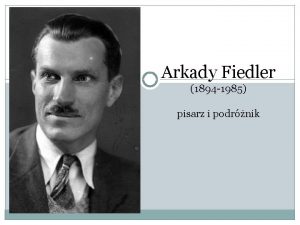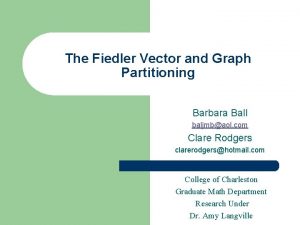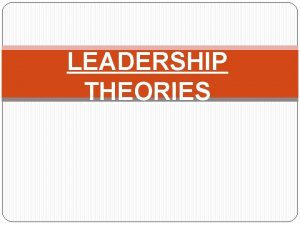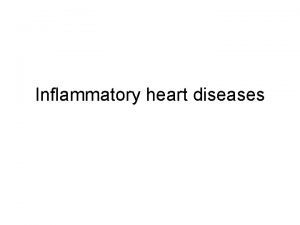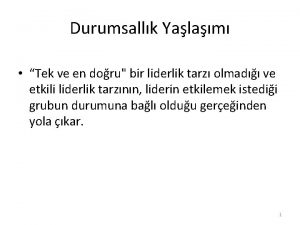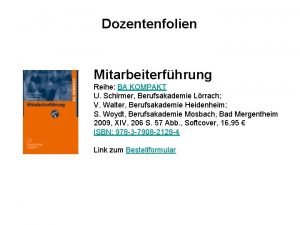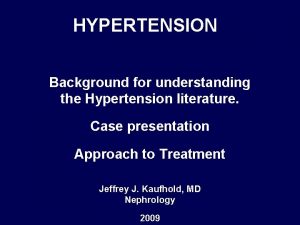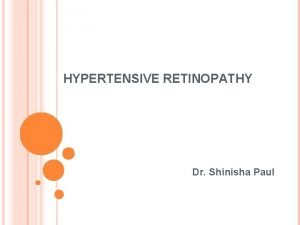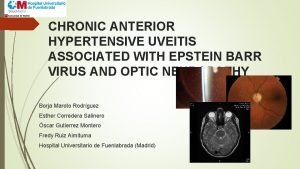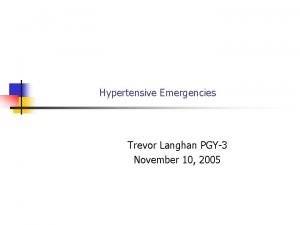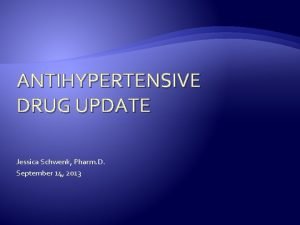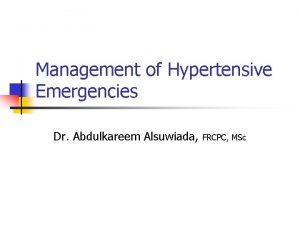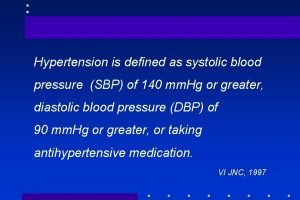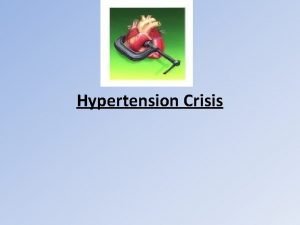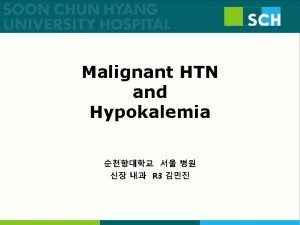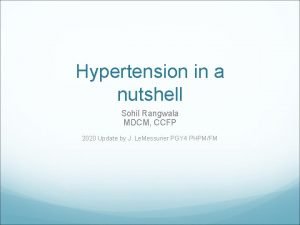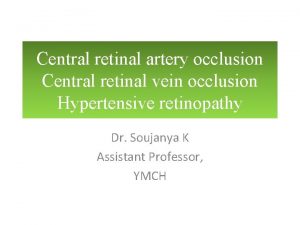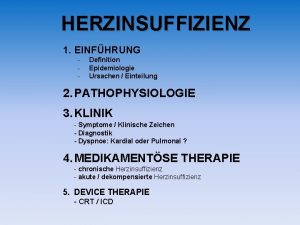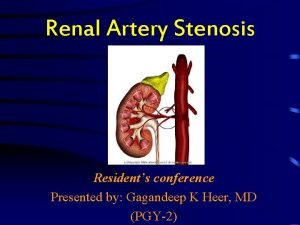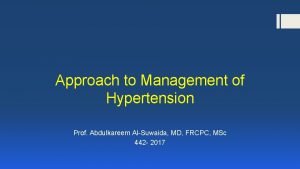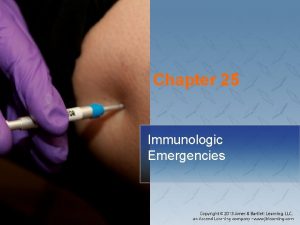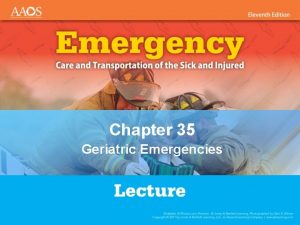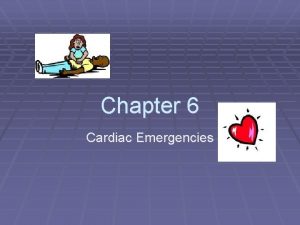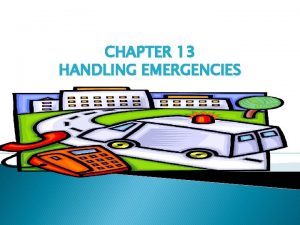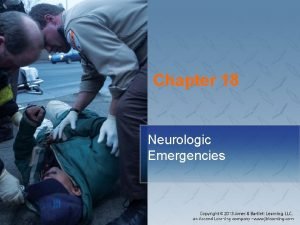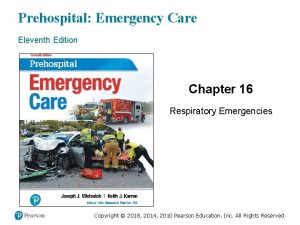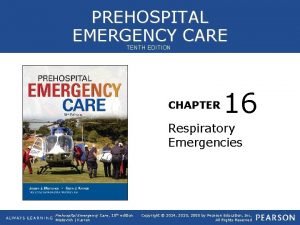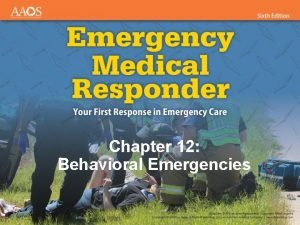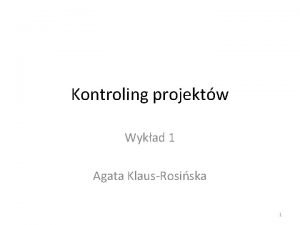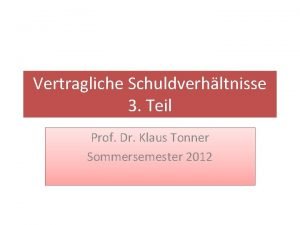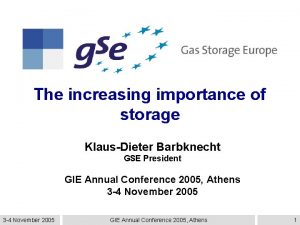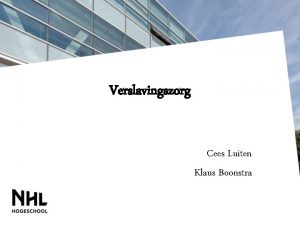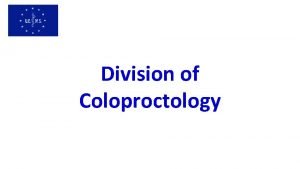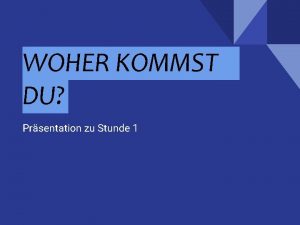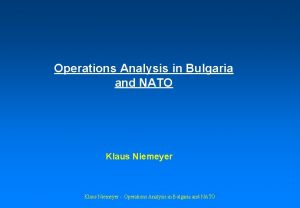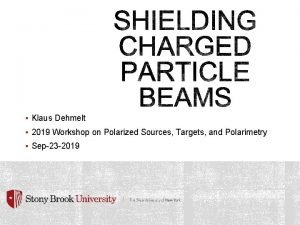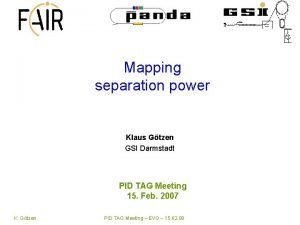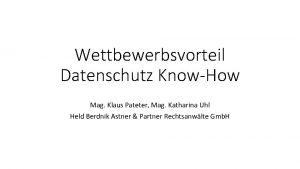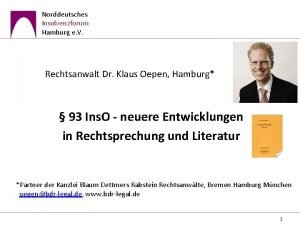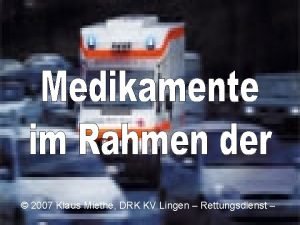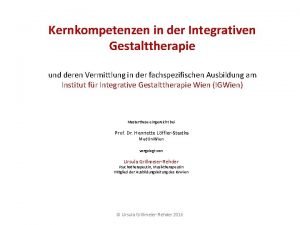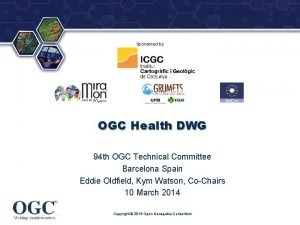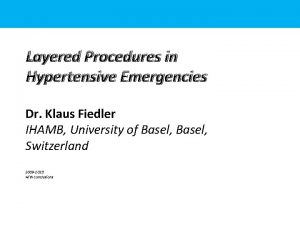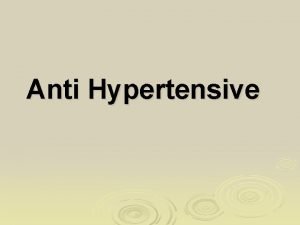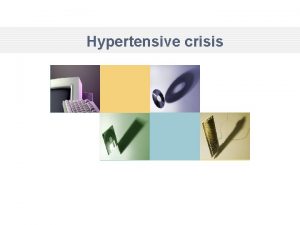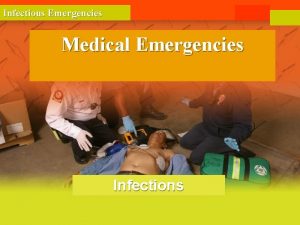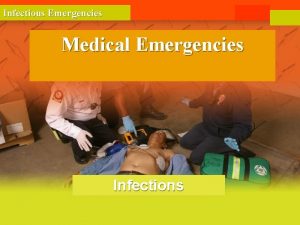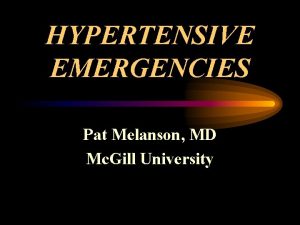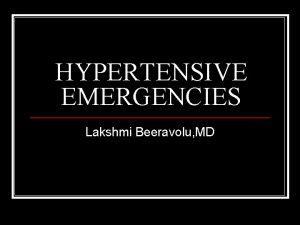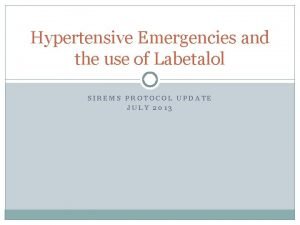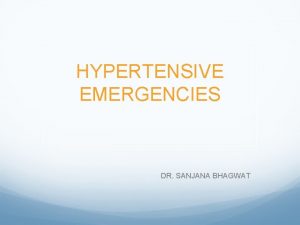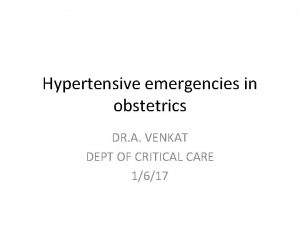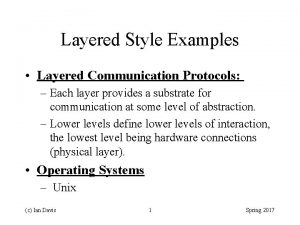Layered Procedures in Hypertensive Emergencies Dr Klaus Fiedler




















































































- Slides: 84

Layered Procedures in Hypertensive Emergencies Dr. Klaus Fiedler IHAMB, University of Basel, Switzerland 2009 -2013 with conclusions

Trends in Hypertension Hypertensive Emergency Case Decision and Classification Therapy and Cardiovascular Complications Primary Events Secondary Events Comparison of Primary and Secondary Events in this Study Conclusions

Trends in Hypertension Systolic blood pressure in mm. Hg (not age-standardized) In 180 countries Time period 80 – 09 Values from WHO

Blood Pressure Mean: Men Average systolic in mm. Hg (not age-standardized) coefficient of regression (b) p<0. 05 Average systolic values from 1980 to 2009 from WHO

Male Blood Pressures 1980 – 2009 Systolic in mm. Hg

Blood Pressure Mean: Women Average systolic in mm. Hg (not age-standardized) coefficient of regression (b) p<0. 05 Average systolic values from 1980 to 2009 from WHO

Female Blood Pressures 1980 – 2009 Systolic in mm. Hg

Simple Trends in Blood Pressure coefficient of regression female against male Female 1. 43 (CI 1. 36 -1. 52); p=0. 001 Male betas of linear predictions (male and female) based on raw values from WHO (1980 – 2009)

Simple Trends in Blood Pressure • if the development is towards higher values of blood pressure (or negligible in male), female trends are ever so often more rapid • if the development is towards lower values of blood pressure, it is usually more rapid in the female sex female trends are highly significant Þ countries with largest gender gaps are… Top 2% Burkina Faso Mali Nigeria towards higher values Top 2% Czech Republic Spain Estonia Malta towards lower values

Physiology: Male and Female with 3 Parameters Countries Blood Glucose Blood Pressure BMI CI Coefficient Female PCA b = 0. 85 (CI 0. 78 -0. 92) • women’s values are non-uniformely distributed amongst different countries • men’s values are uniformely distributed amongst different countries Coefficient Male

Trends in Hypertension: 2016 Non-linear predictions; Average systolic blood pressure Add to baseline of 2009 (in mm. Hg) Predictions based on 1980 – 2009 Raw Values from WHO

Trends in Hypertension Hypertensive Emergency Case Decision and Classification Therapy and Cardiovascular Complications Primary Events Secondary Events Comparison of Primary and Secondary Events in this Study Conclusions

Hypertensive Emergencies • available patient cohort study from May 2008 in Kanton Basel (BS, BL) and Luzern • inclusion criteria: blood pressure >180 mm. Hg/>110 mm. Hg, age > 20 y • discriminant analysis, logistic regression, categorical regression, multi layer perceptrons • primary care questionnaire … in addition to Age and Gender, data on Blood pressure, Drugs, Emergency therapy, Follow-up therapy, Cardiovascular risk factors were requested to be answered. Further questions referred to Accompanying conditions and the History of cardiovascular complications, Cardiovascular complications within 3 months • 1 year follow-up … Cardiovascular events, Follow-up therapy changes and data on newly described Cardiovascular risk factors were requested to be answered

Hypertension Prevalence in the Elderly Prevalence white: no data Age group (approx. ) 65 -74 Wolf-Maier et al. (2003); Kearney et al. (2005); Pitsavos et al. (2006) ; eurostat. ec. europa. eu (2008); National Health and Nutrition Survey of Japan (2006) and WHO

Test: Hypertensive Emergencies and Case Decision Modelling of the „clinical decision“ path E: Emergency Therapy E -H E+H -E -H H -E H: Hospitalization

Hypertensive Emergencies: Symptoms Classification Emergency Urgency Asymptomatic* abdominal pain ataxia chest pain confusion dizziness/vertigo drops dyspnoea headache incontinence limb weakness nausea pallor palpitations pruritus speech disturbances sweating visual disturbances vomitus abdominal pain altered mental status Angst atactic gait cold intolerance dizziness/vertigo dyspnoea epiphora epistaxis flush gait disturbances headache limb pain nausea neck pain palpitations pruritus restlessness shoulder pain sweating tinnitus tremor tympanic pressure visual disturbances back pain included in the statistics, dizziness yet, do not count as overt epistaxis flush heartburn nausea slightly altered mental status * Does not lead to Emergency or Urgency classification symptoms

Differential Diagnosis Medical conditions cardiac acute pulmonary edema with systolic/diastolic dysfunction malignant hypertension, stroke, aortic dissection neurologic traumatic renal drugs endocrine intracranial / subarachnoid hemorrhage, cerebral embolism / stroke, hypertensive encephalopathy head trauma chronic pyelonephritis, renal parenchymal diseases (glomerulonephritis), renovascular disease monoamine oxidase inhibitor interactions, cocaine overdose metabolic pheochromocytoma (excess catecholamines), aldosteronism, renin-secreting tumors, glucocorticoid excess hypercalcemia pregnant preeclampsia, eclampsia psychogenic hyperventilation, Angst, sympathetic hyper-tonus, panic attack Brennan et al. 2010, Critical Care Study Guide

„Available Patient Cohort“ Study time course 18. 4 months lost to follow-up n=26 164 patients included 8 patients died blood pressure determination 14 months n= 137

Cardiovascular Differential Diagnosis: Reevaluation 8 Cases were selected 6: Other 5: Congestive Heart Failure 4: TIA 3: Cerebrovascular Insult 2: Occlusive PAD 1: Coronary Artery Disease 0: None No Yes Hypertension

Hospitalization of Patients Emergency hospitalization patient class diagnosis 1 2 3 4 5 6 7 8 9 10 Emergency Emergency Urgency acute myocardial infarction acute coronary syndrome suspected cerebrovascular insult hypertensive encephalopathy hyponatremia, hypertensive encephalopathy mesenteric ischemia, bowel obstruction, hyperthyroidism suspected cerebrovascular insult

Summary of Patient Data 164 patients sex 70, 4 years (21 -96) Average Asymptomatic (n) 99 Urgency (n) 50 Emergency (n) 15 systolic hypertension (n) 153 diastolic hypertension (n) 40 sytol. /diastol. hypertension (n) 29 m f Anzahl number age f 103 m 61 Emergency systolic blood pressure diastolic blood pressure Median hypertension first observed hypertensive emergency 195 mm. Hg (145 -255) 100 mm. Hg (60 -130) 78, 7% 62, 2% Urgency Classification Asymptomatic

Therapy by Emergency Classes number no therapy monotherapy combination therapy Emergency Urgency Asymptomatic Class

Time-Series hypertensive emergency 1 h 6 h 12 h systolic 6 days 15 days 3. 5 months 14 months diastolic

percentage of patients Cardiovascular Risk Factors ren cy us cien uffi ry isto s al in ily h fam ellit es m bet Dia king smo cise ia em xer of e ity s obe lack pid erli hyp e non

Sex-Specific Distribution Factors cumulative risk factors Diabetes mellitus renal dysfunction physical inactivity hyperlipidemia obesity smoking m Sex f

Cardiovascular Risk Factors After 1 Year

percentage of patients Accompanying Medical Conditions AS OS se rea Inc od in b ion ht eig yw n sio en ert nce hyp plia m olis ect Inf oh Alc a hm Ast AR NS n Pai at Co om n-c No ss e Str ite Wh ne No

Patients and Frequency correlative evidence shows… • first hypertensive emergencies occur often with new patients • White Coat hypertensive patients show fewer symptoms upon examination • symptoms correlate with stress, NSAR medication and infects

Neural Network (modified from Baxt 1990) The network identified 92% of the patients with acute myocardial infarction, 96% of the patients without infarction. When all patients with the ECG evidence of infarction were removed from the cohort, the network correctly identified 80%

Neural Network Key Question “Does the evaluation contain previously inapparent information that can be used to improve on the diagnostic accuracy of predicting…” Baxt, 1990 • hypertension • gender • lack of exercise / obesity

Retained Parameters in Logistic Regression E Class p= E 0. 020 0. 035 E E E U E 0. 042 0. 017 0. 000 0. 021 U 0. 004 0. 046 Asymptomatic A NS ry R o st o di s nt ve ts en ev e ar ul sc n io ns ar n io ns ul sc va rte va pe io rd hy ar c of at Co ca rte pe hy Pseudo R 2=0. 321, goodness of classification 64% Hi te hi of at Co y or st W Hi te hi W nt tie pa ss re St w Ne n tio ec f In n=164

Dynamic Scaling of Emergency Classes 4, 5 4 3, 5 3 2, 5 2 1, 5 1 0, 5 0 -0, 5 Goodness of Classification E U Classification Model: Predictors in logistic regression 30 % Model: Predictors + Symptoms 80 % A Separation of U and A requires use of Symptom variable?

Dynamic Scaling of Emergency Classes 4, 5 4 3, 5 3 2, 5 2 1, 5 1 0, 5 0 -0, 5 „The Diagnostic Gap“ Goodness of Classification Model: Predictors in logistic regression 30 % Model: Predictors + Symptoms 80 % Model: Final E U Classification „Structural Equation“ model without parameters A 44 %

Classification in Hypertensive Emergencies Model unifying 7 different „output functions“ counting 2400 Top 10% Importance E 79. 8% +/-15. 8% U 96. 9% +/-2. 5% A 96. 3% +/-2. 4% Total 95. 0% +/-2. 4% (+/- SD) proposed cut-off max. epochs 500

Optimized Top 500 Models of 2400 Hidden Layer AF Hyperbolic tangent Sigmoid 321 182 Ouput Layer AF Hyperbolic tangent Identity Sigmoid Softmax AUCs ≥ 0. 986 83 93 37 290

Optimized Top 500 Models of 2400 Model unifying 7 different „output functions“ - Top 500 Importance E 100. 0% +/-0. 0% U 97. 7% +/-1. 1% A 99. 6% +/-0. 7% Total 99. 0% +/-0. 6% (+/- SD)

Classification in Discriminant Analysis Emergency Urgency Asymptomatic Function 2 Emergency Asymptomatic Urgency Function 1

Classification in Discriminant Analysis symptoms Symptome Kardiovaskuläre Kompli. history of Anam. cardiovascular events explained variance of 200 Alter age Weisskittelhypertonie White Coat hypertension NSAR variance Varianz Modell model 11 Varianz Modell model 22 Varianz Modell model 33 Infekt infection proposed cut-off Schmerz pain Stress stress Neuer Patient new patient Hypertonie hypertension Entgleisung first hypertensive. Erste emergency Geschlecht sex 0 10 20 30 40 50 60 70 80 90 100

Hypertensive Emergency: Goodness of Classification New data on hypertension 1 2 3 4* Method % Classification Overall Error Neural network Discriminant analysis Cat. Reg Logistic regression 1, 0 (+/- 0, 6%) - 5, 0 (+/- 2, 4%) 10, 0 16, 0 £ 29, 9 *Symptoms were not introduced The logistic regression was included with absolute values of blood pressure as a covariate – these results suggested that these could be used and led to 0% classification error at, however, low statistical significance. Yet, this furthermore indicates that future emergency schemes or health advice can be generated and replaced with medical data and binary decisions (>180 mm. Hg systolic / >110 mm. Hg diastolic) on blood pressure, if required, without the predicted loss of accuracy.

Treatment

Patient Recall? Seemed not absolutely necessary…

Drug History and Emergency Therapy p <0. 05 Cardiovascular treatment track • ACE inhibitors in drug history lead to a significantly higher prescription rate of sedatives • previous treatment with ARB results in frequent emergency treatment with ARB • ARBs in drug history lead to infrequent therapy with ACE inhibitors in hypertensive emergencies • patients receiving ARB in emergency treatment regularly receive ARB in follow-up treatment

Adverse Effects in Therapies Drugs causing drug-induced hypertension and hypertension treatment

Therapy: According to Guideline Combination Therapy Blood pressure reduction Sub-group Significance p<0. 05 6 h systolic alltogether yes 1 h systolic E yes Blood pressure reduction Sub-group Significance p<0. 05 all systolic alltogether or E, U, A none all diastolic alltogether or E, U, A none Mono-Therapy Mann-Whitney U Test

Time-Series hypertensive emergency 1 h systolic blood pressure recommendation 1 to 2 h and 2 to 6 h 6 h 12 h 6 days 15 days 3. 5 months 14 months diastolic

Time-Series: Emergency Acutely treated patients mm. Hg

Time-Series: Urgency Acutely treated patients mm. Hg

Time-Series: Asymptomatic Acutely treated patients mm. Hg

Time-Series: Emergency Acutely treated patients mm. Hg

Time-Series: Urgency Acutely treated patients mm. Hg

Time-Series: Asymptomatic Acutely treated patients mm. Hg

Average of Blood Pressures: Treated Versus Non -Treated All emergency classes Time Treatment None Initial 200 / 102 194 / 98 1 h 186 / 97 186 / 92 6 h 160 / 87 163 / 80 in mm. Hg

Textbook Guideline blood pressure* reduction achieved by 20 -30% in 1 -2 hours • the acutely treated study population was not over-treated, one emergency and three urgency, and no other cases were likely loosing systolic blood pressure too fast (not all 6 hour blood pressure values were obtained) • at least 16 cases showed systolic blood pressure values of more than 160 mm. Hg at 6 hours * Dieterle T, Zeller A, Martina B, Battegay E. Der hypertensive Notfall. Praxis. 2001

Average of Blood Pressures: Treated Versus Non -Treated All emergency classes Treatment Initial 0 h 1 h 6 h Systolic % above 160 99, 0 95, 2 55, 2 Diastolic % below 100 40, 4 55, 4 75, 9 in mm. Hg No Treatment Initial 0 h 1 h 6 h Systolic % above 160 96, 7 92, 7 44, 4 Diastolic % below 100 43, 3 63, 4 88, 9 in mm. Hg

Cardiovascular Complications Arrhythmias were not considered as primary events in the following canonical correlation. They were only included with secondary events if they led to or were followed by death.

Trends in Hypertension Hypertensive Emergency Case Decision and Classification Therapy and Cardiovascular Complications Primary Events Secondary Events Comparison of Primary and Secondary Events in this Study Conclusions

Recurrent Hypertensive Crises - Model and Correlation Canonical correlation Recurrent Hypertensive Crises modelled initial (day 6) blood pressure and risk factors

Perceptrons: Primary Events and Predictors Model unifying 6 different „output functions“ – 2400 Importance Top 1%

Perceptrons: Primary Events and Predictors Classification Top 1% 2400 models 1° Event 94. 9% +/-2. 5% 1° Event 40. 4% +/-26. 7% Total 98. 6% +/-2. 5% Total 91. 2% +/-2. 7% (+/- SD) Other 2 selected models 1° Event Total (+/- SD) 100. 0% +/-0. 0% 98. 4% +/-0. 8%

Obesity Paradox Flegal, K. M. , Kit, B. K. , Orpana, H. , & Graubard, B. I. (2013). Association of allcause mortality with overweight and obesity using standard body mass index categories: a systematic review and meta-analysis. JAMA, 309(1), 71– 82.

Perceptrons: Primary Events and Predictors Model unifying 6 different „output functions“ – 2400 Importance 2 100% Predictions

Models of Primary Events: Discriminant Analysis Age Multiple (recurrent) hypertensive crises in stepwise algorithm (no prior probabilty) set classified 78. 2% p=0. 011 p=0. 004

Perceptrons: Primary Events and Predictors

Primary Events: Goodness of Classification Method Average 1 neural network 2 discriminant analysis 3 logistic regression n=92 Overall % Primary Events % 91, 2 - 98, 4 64, 1 - 84, 8 88, 0 - 89, 1 40, 4 - 100, 0 9, 1 - 63, 3 9, 1 - 27, 3

Trends in Hypertension Hypertensive Emergency Case Decision and Classification Therapy and Cardiovascular Complications Primary Events Secondary Events Comparison of Primary and Secondary Events in this Study Conclusions

Diastolic Blood Pressure - Model and Correlation Canonical correlation Chillon and Baumbach (1997) modelled initial (day 6) blood pressure and risk factors

New Tentative Guideline for Secondary Prevention Non-Linear Blood Pressure Model with Cat. Reg Parameter P of b (regression) Age 0. 122 0. 254 Sex 0. 237 0. 148 Systolic 0. 291 0. 034 Diastolic 0. 349 0. 005 Day 6 R 2 = 0. 51 Importance

Tentative New Guideline for Secondary Prevention Blood Pressure of day 6 Secondary Event Quantification Residuals Systolic Blood Pressure Secondary Event Quantification Residuals Categories Diastolic Blood Pressure Age Categories Secondary Event Quantification Residuals Categories

Trends in Hypertension Hypertensive Emergency Case Decision and Classification Therapy and Cardiovascular Complications Primary Events Secondary Events Comparison of Primary and Secondary Events in this Study Conclusions

Secondary Versus Primary in 2198 neural Networks: Classification of 100% versus <90% < 90% Importance

Secondary Versus Primary Event in Categorical Regression Tendency Primary Event Secondary Age Alcoholism Asthma Diabetes mellitus Family History of Cardiovascular Disease Hyperlipidemia Hypertension Lack of Exercise Non-Compliance Obesity OSAS Renal Insufficiency Second Hypertensive Emergency Sex Smoking White Coat Hypertension -2 -1, 5 Modalized Family History of Cardiovascular Disease -1 -0, 5 0 Coefficient Beta 0, 5 1 1, 5 2 2, 5 3 3, 5

Stratification 3 6 2 3 1 1 3 4 5 ot h( at r) he ) lar nt ve scu va dio Age years 1 3 3 1 6 2 cumulative risk 2 4 5 6 Diabetes mellitus renal dysfunction physical inactivity hyperlipidemia obesity smoking de nt ve re la cu as t re en ev la cu as cv r ca iov rd ca of iov ry rd ca to l h( at de 2° 1° his ro nt co -1 cumulative risk 1 0 5 4 2 2 6 4 5 Group emergency scores lowest Ka k. Ko . K sk va s va io io rd rd Ka

Stratification: Risk Ratios • in patients with hypertensive emergencies history of cardiovascular events is associated with hyperlipidemia with a RR 3. 3 (CI 1. 2 -8. 9); p=0. 017 (Fisher Exact) • a history of cardiovascular events is associated with antihypertensive pretreatment with a RR 4. 4 (CI 1. 2 -15. 8); p=0. 024 (Fisher Exact) • secondary cardiovascular events are associated with smoking with a RR 3. 2 (CI 0. 8 -12. 6); p=0. 1 (Fisher Exact) this is relative to healthy cohort patients

Stratified Population: Further Predictions GLM 4 2 0 -2 An am n 0. 016 Model prob. p = 0. 005; df 21 Ast hm Wh ite b a Co pe at rte hyp nsi ym v ert pto es regression en pre ms sio tre n coefficient atm en t est ic s p An 0. 029 tih y 0. 006 0. 049

Sympathetic Drive sub-category pulmonary vascular metabolic renal on neuronal on renal nutritional/ behavioral reflexes stemming from cardiopulmonary volume-sensitive receptors arterial chemoreceptors altered in obesity or overweightdependent OSAS leptin, insulin angiotensin II subfornical organ and median preoptic nucleus in part via hypothalamus low sodium intake, alcohol excess Grassi (2009) Assessment of sympathetic cardiovascular drive in human hypertension. Hypertension Llewellyn et al. (2011) Mn. PO and SFO drive renal sympathetic nerve activity via a glutamatergic mechanism within the paraventricular nucleus. * Am J Physiol Regul Integr Comp Physiol

Sympathetic Drive 2: Increased secretion of renin, which results in higher angiotensin II levels * Neuronal on renal signalling * Koeppen & Stanton: Berne & Levy Physiology

Cardiovascular Progression Model from Strata 3200 models / selection of 1 best predictor Importance 1 2 3 4 5 6 95. 8% +/- 4. 2% 81. 2% +/-16. 4% 26. 0% +/-24. 2% 31. 8% +/-31. 6% 17. 5% +/-30. 0% 8. 1% +/-23. 8% Total 78. 4% +/-6. 8% Top 1 Total 94. 9%

Trends in Hypertension Hypertensive Emergency Case Decision and Classification Therapy and Cardiovascular Complications Primary Events Secondary Events Comparison of Primary and Secondary Events in this Study Conclusions

White Coat Hypertension - Model Canonical correlation White Coat Hypertension modelled initial (day 6) blood pressure and risk factors

Health Ranking: The Physiology According to the Big 4 Female Male Rank 133 Blood Glucose Blood Pressure BMI Cholesterol Switzerland Rank 121 higher physiological values Female Risk Ratio for White Coat Hypertension 2. 3 From WHO Data lower physiological values lower values female lower values male

The initial decision was obtained without help: equipment was corresponding to technical standards in the ambulatory Primary Care: Decision Path 2. 36 4. 62 2. 08 Initial 2. 03 4 3. 82 2 2. 38 0 4. 62 E Final U 2. 36 2. 01 Model: Red leads to higher and Green to lower ranking S

Cardiovascular Risk Factors: Not Known? • primary cardiovascular outcome (primary event) in this study cohort does not positively correlate with the number of risk factors • secondary cardiovascular outcome and risk factor association is shown for renal insufficiency and smoking • neural networks can produce predictions for primary events based on known cardiovascular risk factors • causal relationships in these neural networks may end upside down - reasons are discovered in the obesity and low alcohol consumption (Hyperplane Extraction Procedures may be found in e. g. Saad and Wunsch II, Neural Networks 20 (2007), 78)

Study: Results • primary cardiovascular events after multiple hypertensive emergencies are elevated to a rate (per year) of 56% • multiple hypertensive crises are overwhelmingly important in the neural network prediction • in models with stratification, white coat hypertension has protective influence relative to hypertension • in non-linear models, secondary or higher ranked events might be prevented by slightly elevated diastolic blood pressure of 90 mm. Hg and higher after hypertensive emergencies during 6 days, and systolic values from 130 – 165 mm. Hg

Acknowledgements Prof. Dr. Benedikt Martina, IHAM Basel Dr. Christoph Merlo, Luzern and especially the primary care doctors Members of my laboratory at the Biocenter, University of Basel and in particular Petek Çakar, Elena Kouzmenko and Christian Chatenay-Rivauday
 Summarize the conclusions of trait theories of leadership.
Summarize the conclusions of trait theories of leadership. Wenezuelska rzeka w tytule reportażu fiedlera
Wenezuelska rzeka w tytule reportażu fiedlera Doug landis
Doug landis Fiedler pisarz
Fiedler pisarz Fiedler vector graph partitioning
Fiedler vector graph partitioning Behavioral theory of leadership
Behavioral theory of leadership Myocarditis
Myocarditis Fiedler auf dem dach
Fiedler auf dem dach Brad fiedler
Brad fiedler Multidimensional model of sports leadership
Multidimensional model of sports leadership Konrad fiedler
Konrad fiedler Fiedler liderlik modeli
Fiedler liderlik modeli Fiedler kontingencia modell
Fiedler kontingencia modell Fiedler leadership
Fiedler leadership Führungsstilkontinuum
Führungsstilkontinuum Caracteristicas de la teoria de la contingencia
Caracteristicas de la teoria de la contingencia Weronika bigus wiek wikipedia
Weronika bigus wiek wikipedia Ohio state university modell
Ohio state university modell Malignant hypertension
Malignant hypertension Elschnig spots
Elschnig spots Hypertensive uveitis
Hypertensive uveitis Hypertensive encephalopathy
Hypertensive encephalopathy Hypertensive urgency vs emergency
Hypertensive urgency vs emergency Périlimbique
Périlimbique Hypertensive urgency vs emergency
Hypertensive urgency vs emergency Hypertensive atherosclerotic cardiovascular disease
Hypertensive atherosclerotic cardiovascular disease Malignant hypertension
Malignant hypertension Hypertensive crisis classification
Hypertensive crisis classification Thyroid storm nursing interventions
Thyroid storm nursing interventions Hypertensive encephalopathy
Hypertensive encephalopathy Diagnosing hypertension
Diagnosing hypertension Keith and wegner hypertensive retinopathy
Keith and wegner hypertensive retinopathy Meto zerok gewichtszunahme
Meto zerok gewichtszunahme Hypertensive emergency
Hypertensive emergency Hypertensive urgency
Hypertensive urgency Chapter 32 environmental emergencies
Chapter 32 environmental emergencies Chapter 22 psychiatric emergencies
Chapter 22 psychiatric emergencies Immunologic emergencies
Immunologic emergencies Chapter 35 geriatric emergencies
Chapter 35 geriatric emergencies Lesson 6: cardiac emergencies and using an aed
Lesson 6: cardiac emergencies and using an aed Chapter 16 cardiovascular emergencies
Chapter 16 cardiovascular emergencies Chapter 19 endocrine and hematologic emergencies
Chapter 19 endocrine and hematologic emergencies Chapter 28 first aid and emergencies
Chapter 28 first aid and emergencies Besides being required for diver training
Besides being required for diver training A 41 year old man presents with slow irregular breathing
A 41 year old man presents with slow irregular breathing Chapter 13 handling emergencies
Chapter 13 handling emergencies Environmental emergencies emt
Environmental emergencies emt Psychiatric emergencies
Psychiatric emergencies Chapter 18 neurologic emergencies
Chapter 18 neurologic emergencies Chapter 16 respiratory emergencies
Chapter 16 respiratory emergencies Chapter 16 respiratory emergencies
Chapter 16 respiratory emergencies Chapter 12 behavioral emergencies
Chapter 12 behavioral emergencies Chapter 23 gynecologic emergencies
Chapter 23 gynecologic emergencies Qut security contact number for emergencies
Qut security contact number for emergencies Emt chapter 18 gastrointestinal and urologic emergencies
Emt chapter 18 gastrointestinal and urologic emergencies Oncological emergencies wikipedia
Oncological emergencies wikipedia Major nutritional deficiency diseases in emergencies
Major nutritional deficiency diseases in emergencies Agata klaus rosińska
Agata klaus rosińska Klaus tonner
Klaus tonner Klaus-dieter barbknecht
Klaus-dieter barbknecht Klaus hennicke
Klaus hennicke Dccts
Dccts Research chemical opiaat
Research chemical opiaat Klaus matzel
Klaus matzel Klaus littmann wikipedia
Klaus littmann wikipedia Klaus woher kommst du
Klaus woher kommst du Klaus niemeyer
Klaus niemeyer Klaus collmann
Klaus collmann Klaus attenkofer
Klaus attenkofer Klaus dehmelt
Klaus dehmelt Klaus behrent
Klaus behrent Klaus gotzen
Klaus gotzen Klaus riegel dimensions of development theory
Klaus riegel dimensions of development theory Klaus dieter frey
Klaus dieter frey Doc klaus
Doc klaus Gita klaus
Gita klaus Grundbedürfnisse
Grundbedürfnisse Klaus pateter
Klaus pateter Klaus oepen
Klaus oepen Klaus miethe
Klaus miethe Ziefra
Ziefra Klaus peter schipper
Klaus peter schipper Klaus riedel
Klaus riedel Klaus ropin
Klaus ropin Klaus kummer
Klaus kummer



